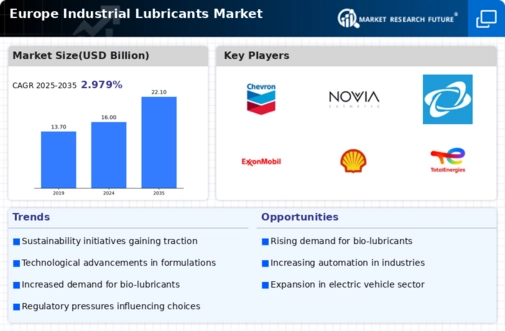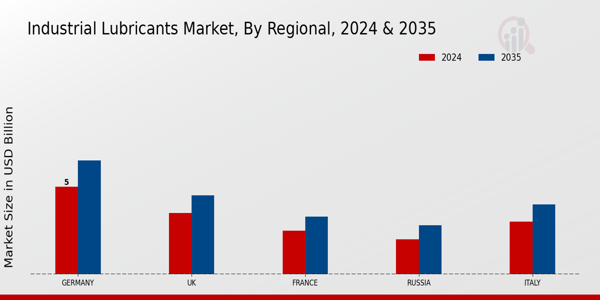Europe Industrial Lubricants Market Summary
The Europe Industrial Lubricants market is projected to grow from 16.0 USD Billion in 2024 to 22.1 USD Billion by 2035.
Key Market Trends & Highlights
Europe Industrial Lubricants Key Trends and Highlights
- The market is expected to experience a compound annual growth rate (CAGR) of 2.98% from 2025 to 2035.
- By 2035, the market valuation is anticipated to reach 22.1 USD Billion, indicating robust growth potential.
- In 2024, the market is valued at 16.0 USD Billion, reflecting a solid foundation for future expansion.
- Growing adoption of advanced lubrication technologies due to increasing industrial automation is a major market driver.
Market Size & Forecast
| 2024 Market Size | 16.0 (USD Billion) |
| 2035 Market Size | 22.1 (USD Billion) |
| CAGR (2025-2035) | 2.98% |
Major Players
Chevron, Novvi, Sonepar, Fuchs Petrolub, ExxonMobil, Shell, TotalEnergies, Lubrizol, Castrol, Petrobras, Repsol, Cortex, SKF, BP























